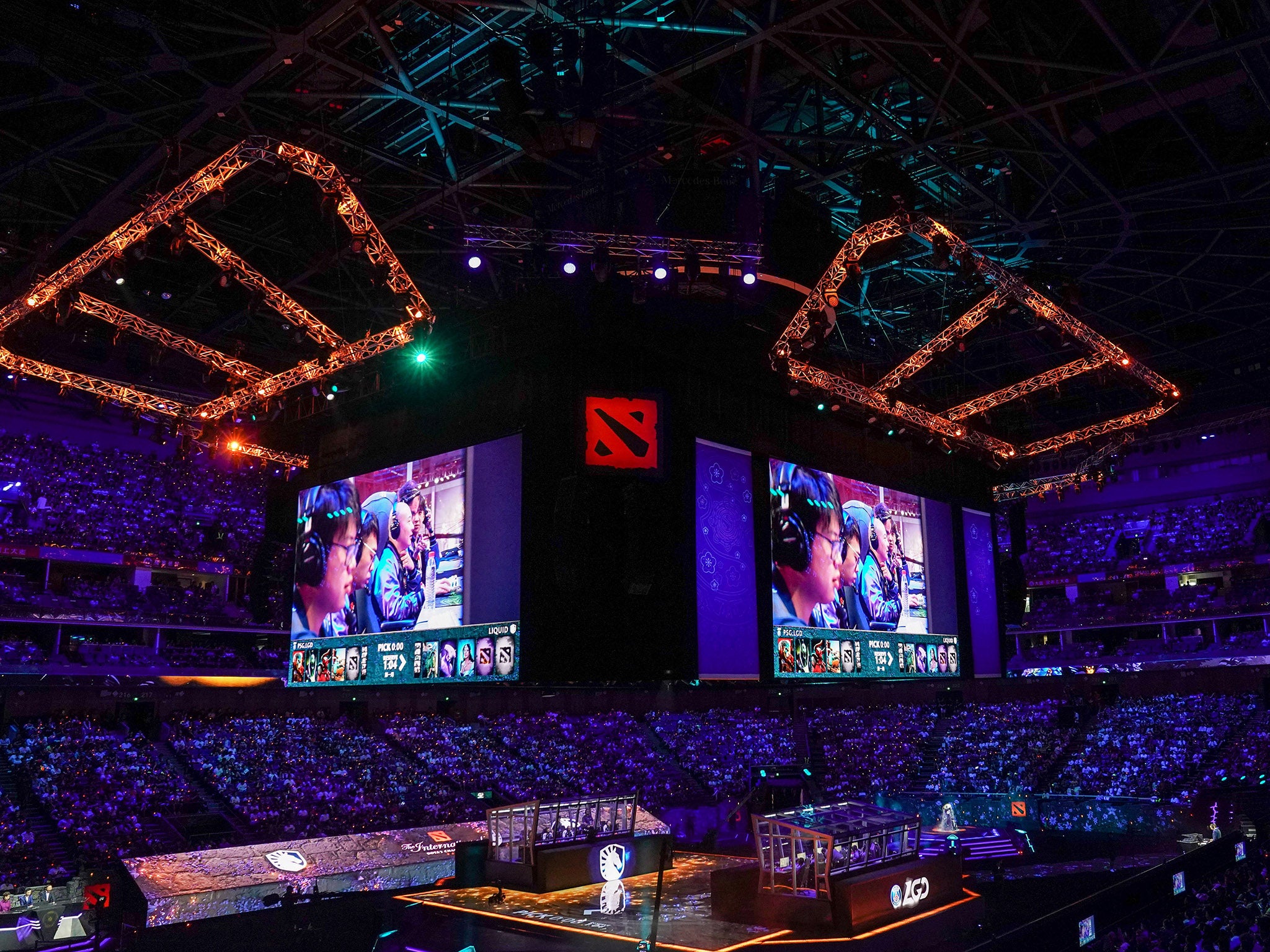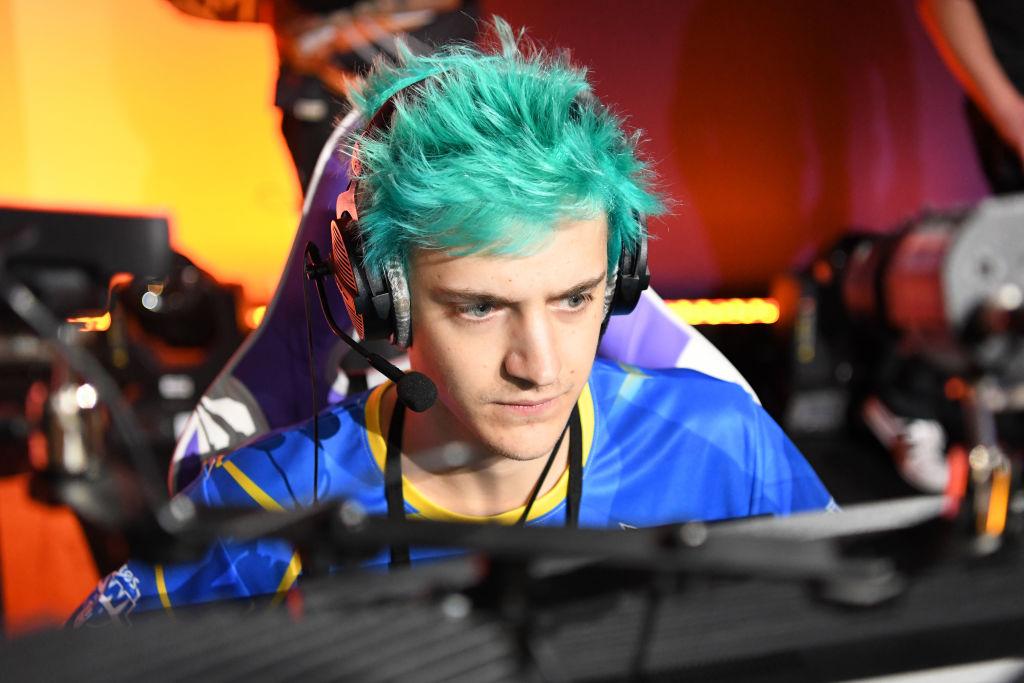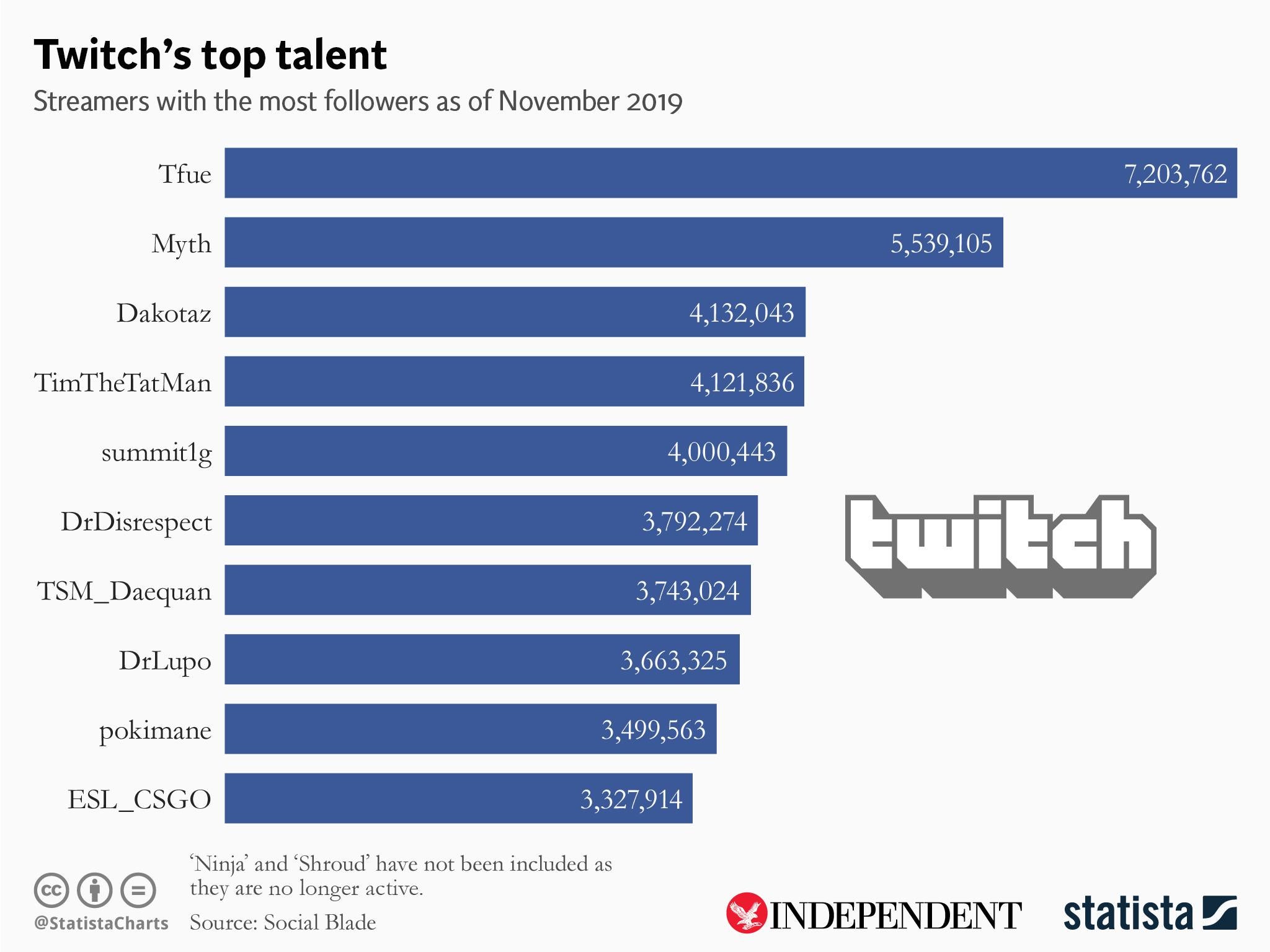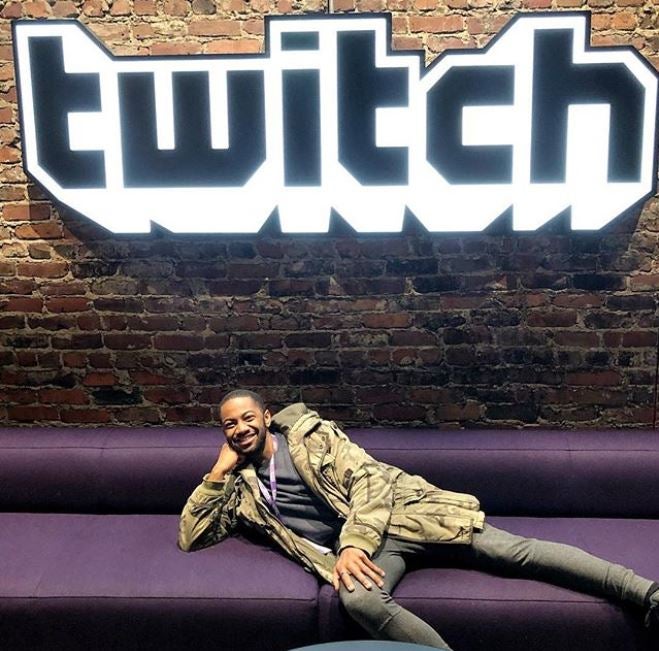The meteoric rise of Twitch
The platform has become the most popular live-streaming service in the world. But how did a site where you can watch other people playing video games in their bedrooms for hours and hours take over the internet? Leslie Leuenberger investigates

The world of gaming no longer only revolves around playing video games. Just as much of gamers’ time, if not more, is spent watching other gamers play. As for the ones working on a career, live-streaming and growing a community has become an essential tool for success. Nowadays, live-streaming video games is a billion-dollar business and there are a number of platforms that serve it, but one stands out over the others – Twitch.
The streaming website is currently the world’s most popular platform to watch people play video games. It functions in a similar way as other social networks do. Users sign up, subscribe to channels and engage with influencers live over a chat forum. The algorithm makes sure to cater to their taste. Considering the fact that Twitch has only been around for eight years, the website has had a meteoric rise.
Seeing its potential ahead, Amazon bought Twitch in 2014 for a whopping $970m (roughly £585m). According to statistics released by Twitch last year, the streaming website has over 15 million daily active subscribers and over 3 million monthly broadcasters. There are more than a million viewers at any given time and they spend an average of 95 minutes watching people gaming per day.
There is a lingering question that non-gamers might ask themselves now: why exactly do people watch other people play video games?
Dr Mark R Johnson, from the University of Alberta, has been looking into how to answer this question. The former professional poker player has been researching Twitch for the past three years by observing and analysing over 200 channels and interviewing professional and semi-professional streamers (around 100 to date).
According to him, what makes Twitch a unique platform, compared to others like Youtube, is the combination of live content and the ability to talk directly to the content producer. While streamers are live-broadcasting, viewers are able to communicate with them in a chat forum and have them reply in person. “Aside from small amounts of live phone-in TV and live phone-in radio, the combining of the two [live content and chat] was very new when Twitch went online in 2011, especially when coupled with video,” he says.
While gaming is still the community’s core identity, Twitch has significantly broadened its content in recent years and introduced new categories for non-gaming channels. Now there are thousands of creators on Twitch streaming themselves as they play music, cook, stitch or doing things as mundane as walking to the grocery store.
According to Twitch’s statistics, 81.5 per cent of its users are male, half of them between 18 and 34 years old. This fits the stereotype of the young, male gamer. Other than that, official demographic data that Twitch is willing to share is scarce. In terms of streamers only, Johnson found out that the ratio of men and women is more or less equal. “However, the more successful the streamer, the more likely they are male.”

According to his research, relatively few broadcasters have been to higher education and many of them express traditional views. Johnson describes the community of Twitch as “simultaneously inclusive and exclusionary”. On one hand, it is a “hugely diverse range of people” that stream on Twitch and find success. For streamers with a disability, for example, Twitch provides a platform. On the other hand, “one needs to be highly conversant with geek culture as a whole, with Twitch culture and Twitch in-jokes more specifically”, he adds. “From channel to channel the cultures vary according to what a particular streamer allows, the games they play, the noteworthy moments in the past of that channel, and so on. Viewers need to be conversant with these things if they want to be visible and not ridiculed when talking in a channel,” Johnson adds.

As Twitch draws millions of viewers to its streams every day, marketers are starting to realise its potential. Especially for businesses that specifically target millennials interested in video games, Twitch can become a marketing gold mine. MJ Widomska, creative director at the data-driven creative agency YRS TRULY, regularly collaborates with streamers for brand advertising. “We live in an era where every brand has a YouTube channel, everyone posts videos on Facebook and Instagram and people are less inclined to watch [the videos] to the end. The novelty of live-streaming is that it is interesting enough to keep people for longer.”
There is a certain thrill to the live element. Something could go wrong, something unanticipated could happen, and streamers just seem much more authentic, as if they were sitting right next to you. The fact that viewers can ask questions via chat and could very well get a reaction almost immediately makes it an exciting medium. Users also get the chance to vote on things, which means they are given a certain amount of control over what they’re watching. The number of businesses – outside of the gaming industry – that work with Twitch influencers is still relatively small.
We live in an era where every brand has a YouTube channel, everyone posts videos on Facebook and Instagram and people are less inclined to watch [the videos] to the end. The novelty of live-streaming is that it is interesting enough to keep people for longer
For collaborations with influencers YRS TRULY pay anything from £500 to £10,000, according to Widomska. “A lot of streamers don’t really know what they should charge. Especially in the UK, the idea of hiring a Twitch influencer is still new. When we reach out to managers, they struggle to give us a ballpark number because they’ve never worked with a brand before.” The price range for streamers is roughly the same as for Instagramers, Widomska adds. However, followers on Twitch are worth a lot more than on Instagram: “50,000 on Instagram compared to 50,000 on Twitch are two different things. On Twitch 50,000 means that you can bring pretty much 1,000 to a stream. It counts a lot more than a couple of people seeing your post on Instagram. There is a bigger connection on Twitch.”
Like on any other social media platform, it didn’t take long for internet celebrities to sprout on Twitch. All of sudden, anybody could become a star. Its biggest success story is Tyler Blevins aka “Ninja”. The world’s most famous player managed to cultivate an audience of over 14 million Twitch followers. In August this year, he announced he would leave them behind and switch to Microsoft’s streaming platform Mixer. He was followed in October by Shroud, who leaves 7 million followers behind, and CouRage, with 2 million, just last week. The exodus of Twitch’s top players might have brought more streamers to Microsoft’s Mixer, but it hasn’t brought more viewers. Data from StreamElements show it still makes up just 3.2 per cent of the overall market in terms of hours watched, compared to Twitch’s 75.6 per cent. But with Microsoft buying up big streamers for its platform, it’s one Twitch should watch.
Now Ninja, Shroud and CouRage are out of the way, the biggest streamers left on Twitch are currently Tfue (7.2 million), Myth (5.5 million) and Dakotaz (4.1 million).
Up until last year, it was Simon Koschel’s job to scout new streaming talents and eventually turn them into Twitch partners. “I would consult them on how to get more viewers, on how to communicate with their audience and how to present themselves on their channel. After they’ve reached a certain number of viewers, I could offer them a partnership which made it possible for them to gain revenue.
How much exactly Twitch’s high-profile streamers make is a well-kept secret. However, Twitch’s former star streamer Ninja confirmed in an interview with Forbes last year that he made more than $500,000 a month. CBNC even suggested he has a monthly income of £1m. “A good rule of thumb is: when a streamer has a viewership of 10,000 upwards you can assume that they can make up to a 7-figure annual revenue if they monetise well,” says Koschel.

Streamers make an income through sponsorships, advertising revenue, affiliate deals and by selling merchandise products. A large sum, however, comes directly from their followers. For $5 a month fans can subscribe to a channel and get in return unique emotes (emojis) to use in a streamer’s chat. The second-biggest income source is donations. Streamers encourage viewers to reward them with money in exchange for their free content. In return, generous and loyal viewers receive icons like “badges” that represent social status in the chat room. The longer a viewer has watched a channel, the higher the status and thus, less likely for the viewer to switch to a new channel. This guarantees a regular income for high-profile streamers. In a video on his Youtube channel, top-streamer Disguised Toast revealed how much he makes a month.
It is a lot harder these days. You can’t just start streaming with your potato PC, in 480 pixels. You have to invest in equipment, so you can give viewers a good experience right away
For Toast, donations bring in around $2,500 to $4,000 from advertisements and $14,000 from subscriptions. Twitch usually asks for 50 per cent of the subscription revenue but top streamers get a better deal of 70/30, he says.
In the early days of Twitch, users would start streaming content for their friends without having any expectations of making money. Today, it’s a dream of many gamers to turn streaming into their full-time job. “It is a lot harder these days. You can’t just start streaming with your potato PC, in 480 pixels. You have to invest in equipment, so you can give viewers a good experience right away.” There’s no recipe for success, Koschel adds, but there’s one thing the big streamers he knows have in common: humour. “They are all funny and entertaining. Live-streams on Twitch go on for hours. People tune in when they are bored at work or alone at home. They want the broadcaster to be good company and to make them feel good.”
In order to gain viewership, many streamers dedicate their life to Twitch. Some play for seven to 10 hours a day, five to seven days a week. They take on streaming challenges such as to not miss a day in months or even years or to play for 24 hours or longer without a break. The streamers Johnson spoke to admitted that it is extremely hard work and damaging to their personal lives and health.

Prominent streamer Jayson “MANvsGAME” Love stated a couple of years ago that the only way he could do it was with the help of drugs, such as speed. In 2017, the popular gamer Brian Vigneault, called Poshybrid, died during a live-stream due to a drug overdose. The case led to a debate about the hazards of these marathons. However, not much has changed. In June another popular streamer, Desmond “Etika” Amofah was found dead after posting a video in which he expressed suicidal thoughts.
Based on Johnson’s observations female streamers struggle with how to present themselves as they are often judged on their looks and relationship status. “There are interesting overlaps between Twitch and cam girl culture in many ways. Primarily for women streamers who generally need to present themselves as single in order to be successful. They monetise certain acts with their bodies (paying money means they'll do a dance, for example) and tend to gain more viewers the more skin they show. Although, Twitch itself has taken a relatively firm line on wanting the platform to be fairly de-sexualised, and the rules for what one can and cannot do on stream have become stricter in the past couple of years.”
$970m
Amazon bought Twitch for the whopping sum in 2014
Like with many other online communities and social networks, hate speech and trolling is a major problem on Twitch. Female streamers especially regularly face harassment and discrimination. On Twitch the insult “thot” – it stands for “that ho over there” – is frequently used to describe female gamers.
Tabitha Lyon, aka Artyfakes, a successful UK Cosplayer and prop maker, has been broadcasting creative content on Twitch for several years. Over 29,000 viewers watch her making video game props with her dad, cooking lasagne or playing Fortnite. She deals with trolls on a daily basis, she says. “I would say it is harder for girls on Twitch because we do get treated differently. Of course, as a cosplayer I do a lot of ‘lewds’ (photoshoots or videos of a sexual nature) but I don’t really get my boobs out when I stream on my channel. But then it doesn’t matter what I wear, people are going to troll me and ask me to show my tits. I tend to ignore or delete the comments,” she says. “Unless, when they really piss me off, I go at them, all guns blazing, and shut them down.”
Raymond Tsang is one of the few who has achieved what many gamers dream of. He gets paid for playing video games full-time. In the world of esports, Tsang is better known as kaSing. He is one of the UK’s most prominent and successful players. The 25-year-old, currently living in London, is employed by the competitive gaming organisation Excel Esports. As a professional gamer, Tsang plays in a team and has to follow a strict practice regime. A normal workday starts with a meeting at 11am. After that, he spends the rest of the day playing one of the world’s most popular video games: League of Legends. It’s the game he specialised in, he says. “First there is a warmup until 12:45 pm, then I play from 1pm to 4pm, have a one-hour break, and then we continue from 5pm to 8pm with another block. This includes a review and analysis of the game later on with our team and coach staff.”

Besides playing for the organisation, Tsang is also a streamer on Twitch. He tries to broadcast a game almost every evening after work. “I enjoy streaming a lot. It is something I can give back to the community,” he says. Tsang currently has a growing fan group of more than 27,000 followers. “My community on Twitch makes me feel more motivated, especially my loyal followers. I don’t know… it just feels great.” As a professional gamer, Tsang earns a six-figure salary a year, he says.
Being on Twitch is a way to brand himself and create a relationship with his fans. “It’s a very personal stream. I want my followers to feel like they can talk to me as a friend.” Tsang doesn’t see himself as an entertainer but someone his fans can relate to. Often, he talks to them about how his day has been but also shares gaming tips. “I get messages from people that say I make them feel better which makes me feel like I am helping people,” the esports player adds.
Spreading positivity and making people feel better is what ChocolateKieran’s channel is all about. Over the past six years, the London-based streamer has grown a community of 11,000 viewers. After finishing university in 2017, he went full-time. A year later he made Twitch partner. Kieran gets them too, messages like “you’ve made my day” or “your stream has really helped me”. It’s what spurs him on. “If viewers in the chat are not having a great day or they are struggling to meet certain goals, they may want to talk about their day and I give them advice or words of encouragement.” His aim is to provide a safe space for people who go through a tough time, a place to talk, he says.
This type of viewer-streamer relationship is not rare, Johnson’s research has found. He’s seen user responses like these countless times. Some viewers have even told their favourite streamers they’ve saved them from suicide. “I think for lots of people in a bad place, Twitch connects them with like-minded gamers and geeks, with digital celebrities who are fun and witty. They make them feel cared for and important,” Johnson says. This is also part of the answer to the question of why people watch other people play video games. Johnson explains it as follows: “Although some undoubtedly watch Twitch to see high-level gameplay, my research overwhelmingly suggests that the majority watch it for a sense of inclusion and belonging all around gaming and geek culture.”
In order to make his followers feel like they belong, Kieran makes an effort to respond to messages outside the stream too. To maintain a positive atmosphere on his channel, Kieran set up a few rules for his viewers. There is a zero-tolerance policy for racism, homophobia, transphobia and sexism, for example. People who break the rules will either be suspended for a certain amount of time or banned permanently. His moderator helps him run the chat smoothly. Even though he can make a living from streaming, Twitch has become much more than just a job to Kieran it seems. “Before, my goal was to reach partnership, and I've been very lucky to become a Twitch ambassador. Now, I just want to see how far I can go and how much positive impact I can have on people.”
Over the past couple of years, we have seen a big shift in the way people interact with video games. Not only have video games become a spectators’ sport, Twitch has also helped change the general perception of video game culture. The gaming audience is taken more seriously, being a professional gamer is becoming a viable career. “I think that Twitch is going to get even bigger and it will become increasingly mainstream. There are gonna be more ways to interact with audiences as they become more serious in the eyes of advertisers,” Widomska predicts.
Even though YouTube, Facebook and Mixer are taking on Twitch with their own game streaming platforms, they don’t have the numbers to post a threat… yet. The streaming war is far from over, but, at least for now, Twitch remains a mecca for online gamers.
Join our commenting forum
Join thought-provoking conversations, follow other Independent readers and see their replies
Comments